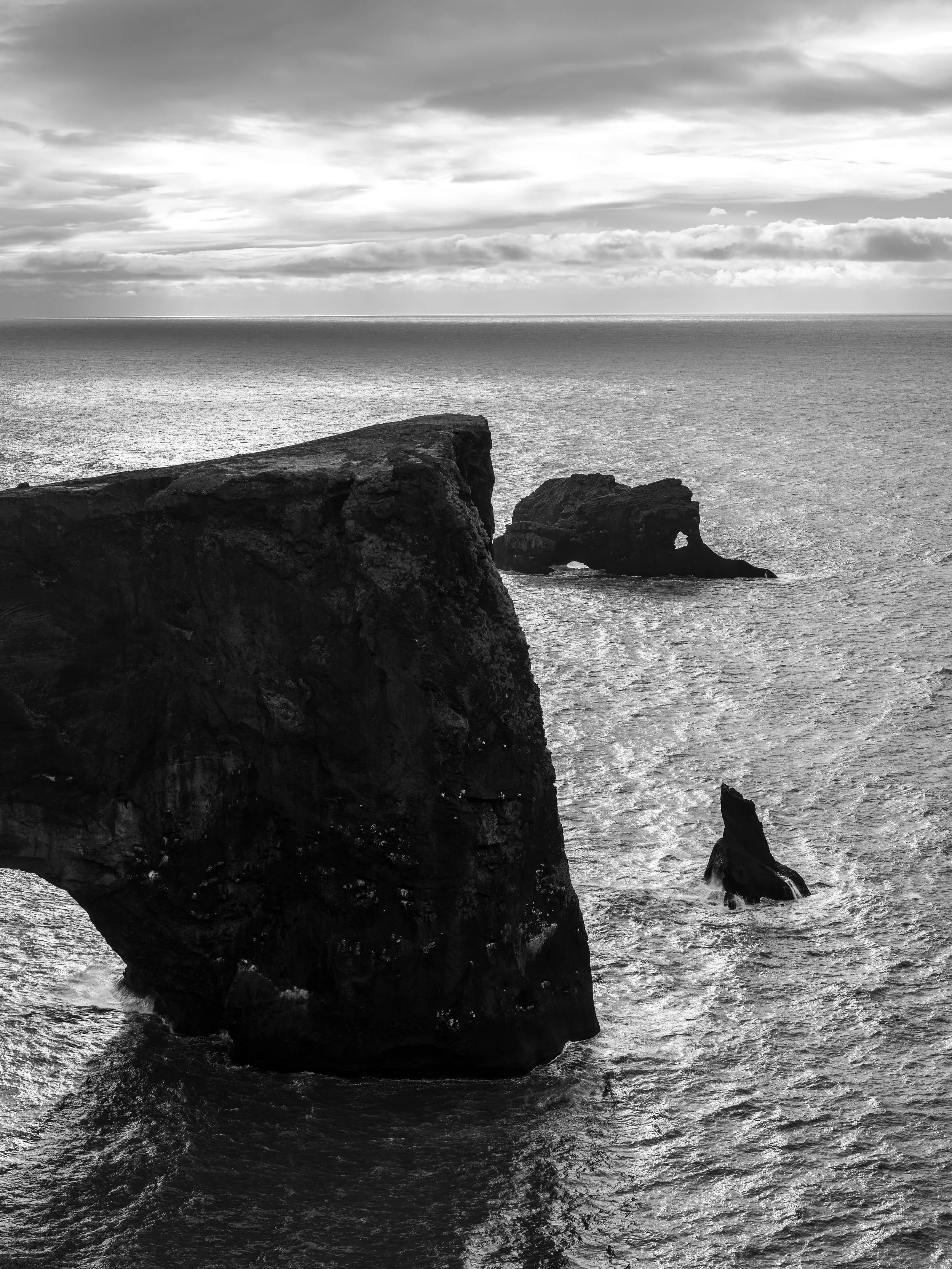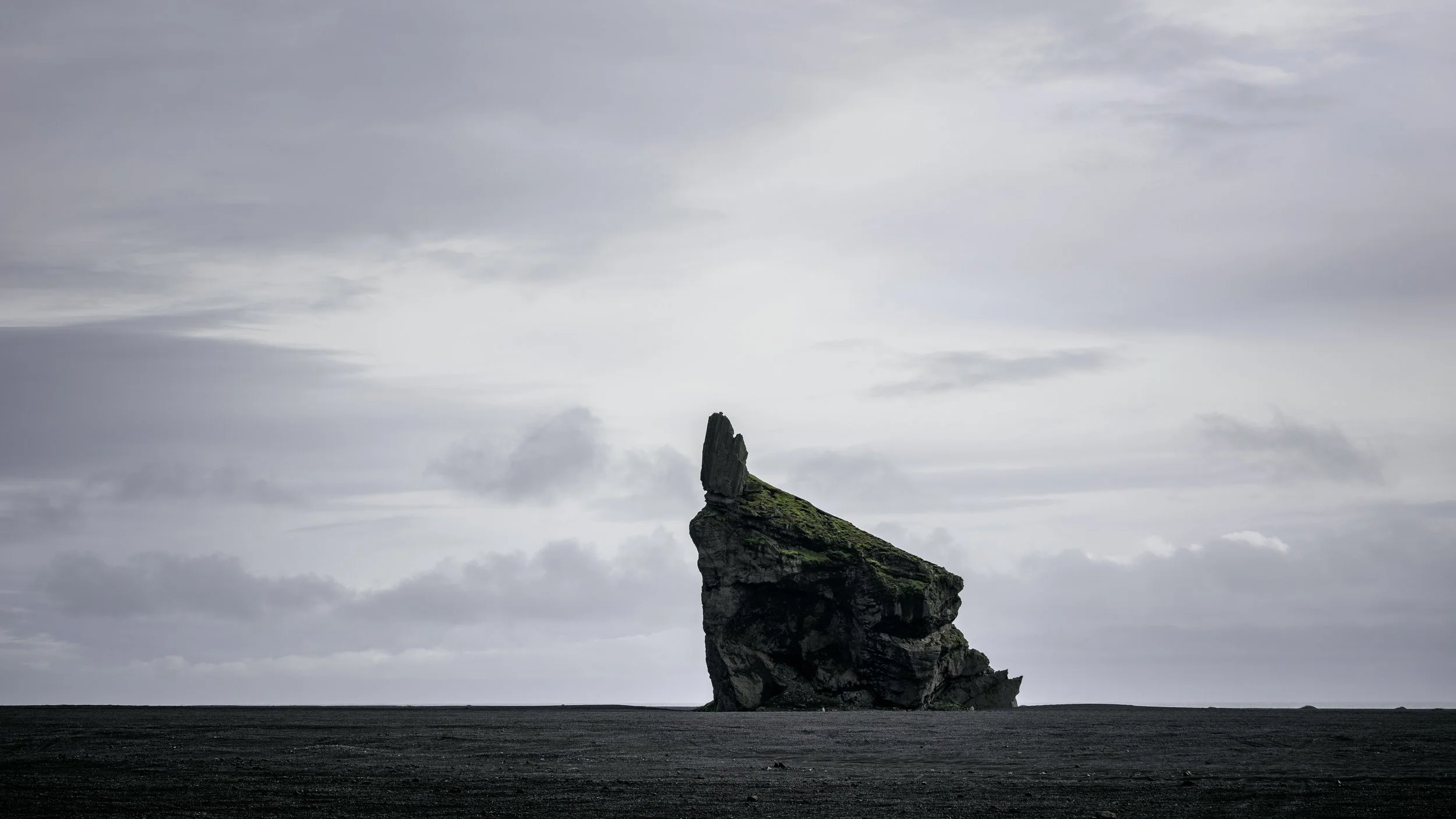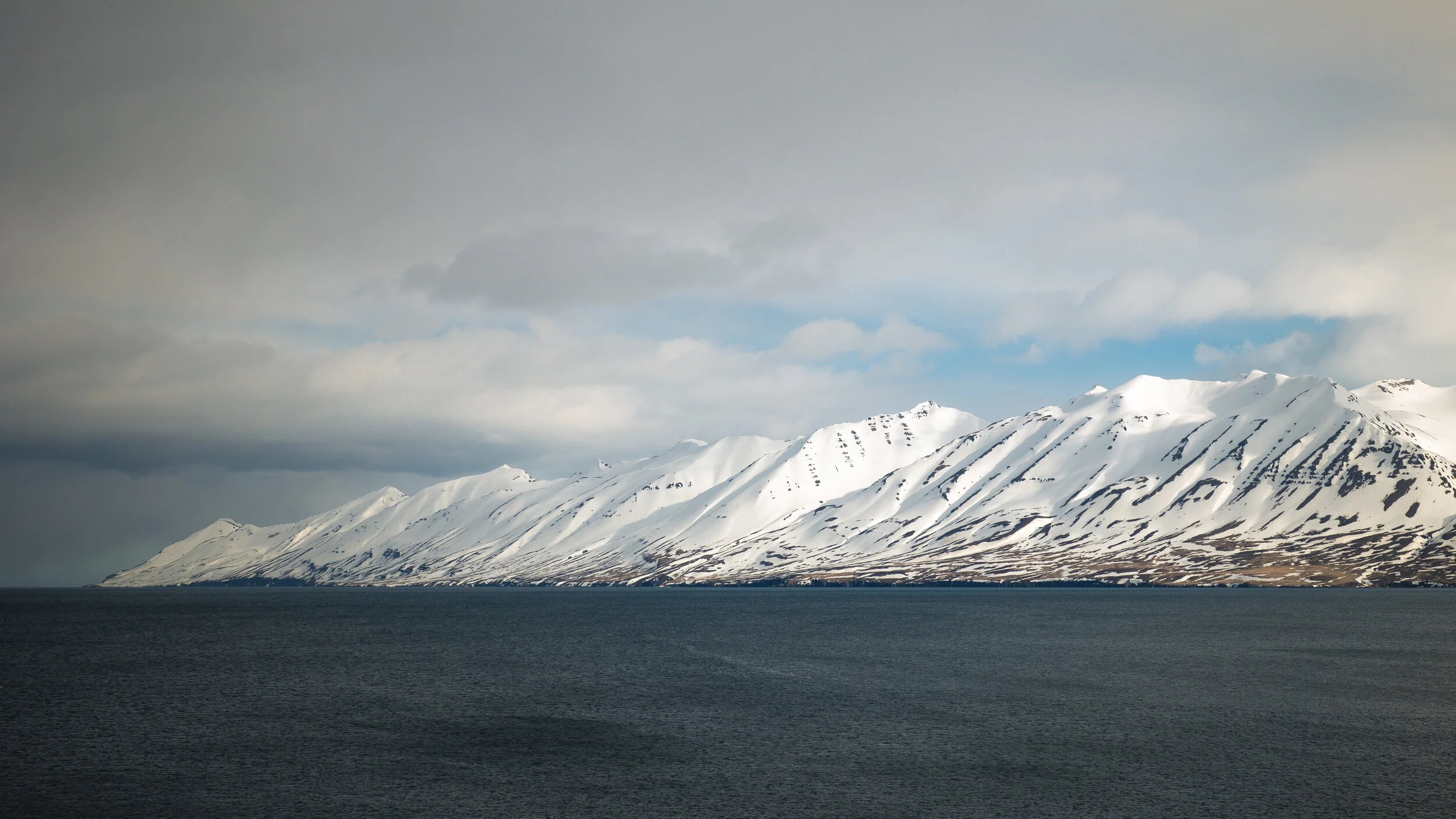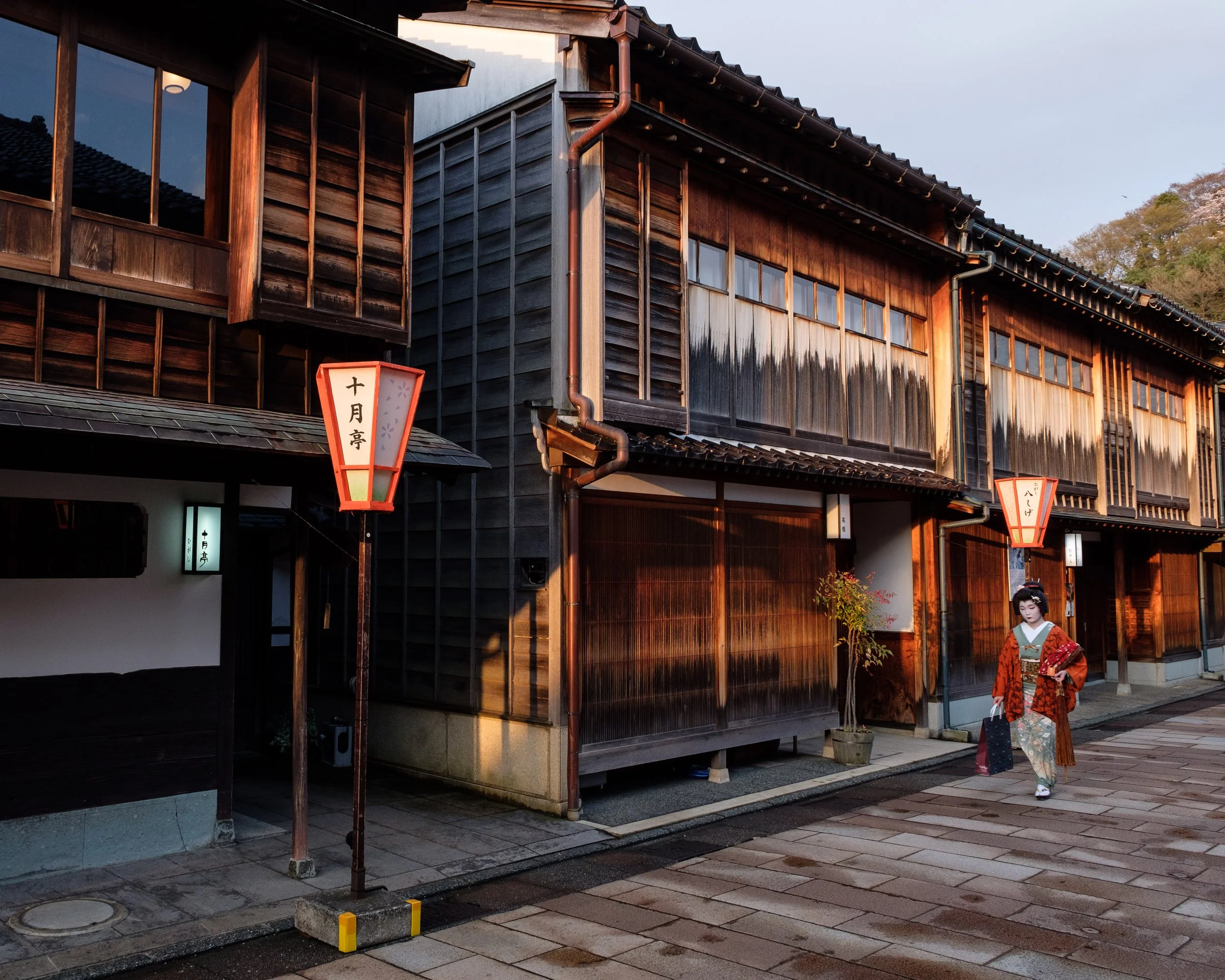Blog
A blog about photography and travel.
Nova Scotia
A week exploring Nova Scotia
Early June I went by myself to Nova Scotia for a week’s trip. Icelandair had just started flying there (I was on the first flight), and I’d never been there before. I didn’t know a lot about it except that the company I work for opened its first foreign office there back in the 1980’s, and we had a lot of business there in the fishing industry.
So it was an exploration of sorts, with pros and cons from my point of view.
Pros:
Cape Breton is beautiful and not too touristy. Also the area south of Halifax (Peggy’s Cove, Lunenburg), although a bit more touristy.
If you’re into history don’t miss Fort Louisburg.
If you’re into lighthouses (which I am) there’s a lot of them.
If you’re into ship spotting (which I am as well) there’s a couple of places that are good, especially Halifax.
The Annapolis Royal botanical garden is well worth a visit.
In season, the lobster and oysters are fabulous. But you have to find a good restaurant for it, otherwise you’ll get disappointed.
Cons:
Nova Scotia is quite large and there are big parts of it that are not that interesting. Especially for landscapes. Expect to do a lot of driving.
Halifax has a nice, small seafront area but otherwise it’s a bit dull.
If I should go there again I would go for the autumn colors (the whole island is basically nothing but coast and trees) and I would concentrate on Cape Breton.
Wales
Driving around Anglesey and Snowdon National Park in the fall.
For the fourth time this year I went on a trip to the UK, this time to the northern part of Wales. I’ve not been there before, but it’s easy to get there from Iceland and from what I’ve seen from others it’s a nice spot for photography. So why not.
I stayed in Caernarfon, which was an inspired choice. It’s kind of central, with Anglesey to the west and Snowdonia National Park to the east. There’s an excellent inn there I can recommend (Black Boy Inn). A famous YouTube video comes to mind, just kidding :-).
Weather was all kinds, both stormy and sunny, but I guess that’s par for the course at this time of year. I was a bit too early for the fall colors, so that’s a reason to go again.
The photos are take on an GFX50R with the 32-62mm and 100-200mm lenses, and a Mavic 2 Pro drone.
Scotland, Isle of Skye
A birthday trip to the Scottish Highlands and Isle of Skye
I celebrated my 60th birthday in the middle of February. There was a great family dinner in a nice restaurant, and then, as a present to myself, I went on a week-long trip to Scotland. I just booked a flight and a car, and then accommodation for the next day, as I went along. This being February, the route I took was determined by the weather forecast. For the first couple of days, I stayed on the east coast, then made my way westwards towards the Isle of Skye, where I stayed for a couple of nights. The last two days I spent in the Highlands around Glencoe.
Scotland is, of course, fantastic for photography. A lot depends on the weather, so for good results, a lot of time needs to be spent. I almost consider this a scouting mission :-).
Now for the photos.
The Aberdeenshire coast is interesting, with lighthouses, fishing towns and a lot of empty coastline. I particularly liked Aberdeen, with its unique dark grey stone buildings, and Fraserburgh, which has a proper fishing harbor. Even my father would have been impressed with all the boats there.
Crovie is a small village on the north Aberdeenshire coast. A remarkable place, just a single row of houses facing the open sea. How they survive the North Sea storms is a mystery.
I spent an evening and a morning in Inverness, and the following morning I drove to Fort William along Loch Ness. Inverness is a nice medium-sized city but Fort Williams is *ahem* not very interesting, something I knew from having been there for work about twenty years ago. Its surroundings are, however, breathtaking, with Ben Nevis, the highest mountain in the UK, towering right above it.
Driving to the Isle of Skye was the highlight of the trip, both the island itself and the mountain passes and lochs you encounter on the way. The good weather forecast i had for the couple of days I stayed did not pan out, which, according to the lady that rented my the cottage, is par for the course. Skye is barren, mountainous, sparsely populated and surrounded by lochs and islands. It has some magnificent sights, such as the Quaraing, a massive landslide that is apparently still ongoing. Much depends on the weather though.
For the last two nights I stayed near Glen Coe and spent a day exploring the area. On the way from Sky I spotted a waterfall and rapids in the River Shiel close to the road. Could have spent the day there.
South Iceland
Short weekend trip to South Iceland
My brother and I had a spare weekend, so of course we wanted to go and take some photos. Unfortunately the weather forecast was not great, but we decided to take a chance on the south coast. We stopped at the usual places on our way east to Fosshótel Núpar, where we stayed for the night, and then drove back to Reykjavík. For myself, I had only one destination on the agenda: the two waterfalls in Djúpá. These are fairly close to the ring road (but not visible from there), although it’s not obvious how to get to them. Hint: park before the old bridge over Djúpá (63°56'55.7"N 17°39'17.2"W) and walk northeast from there.
Kvernárfoss
Kvernárfoss is just east of Skógarfoss, hidden in a short canyon. Very easy to get to and much less visited than its more famous neighbor.
GFX50R + GF80 @ 63°31'43.3"N 19°28'49.1"W
Dyrhólaey
Home to one of the best view-to-effort ratios. Drive to the top and admire the endless coastline to the west , Reynisfjara, Reynisfjall and Reynisdrangar to the east, and Mýrdalsjökull glacier to the north. Straight south, on the other side of the world with no land in between, is the Antarctic. There’s a picturesque lighthouse, and of course Tóin, the gigantic stone arch.
GFX50R + GF80 @ 63°24'10.9" N 19°7'47.5" W
Reynisdrangar
At the east edge of Reynisfjara (Black Sand Beach for the tourists) there are three ancient volcanic crater plugs being continuously battered by the seas. The middle one is variously called Háidrangur (High rock) or Skessudrangur (Troll rock, of the female type).
GFX50R + GF100-200 @ 63°24'9" N 19°2'25.2" W
Arnardrangur
Just south of Hjörleifshöfði there are a couple of big rocks sitting calmly in the sand. Their origin is uncertain but perhaps the massive glacier floods from when Katla erupts have carried them down the sand? The larger one is called Arnardrangur (Eagle’s rock).
GFX50R + GF100-200 @ 63°24'45.7" N 18°44'50.8" W
Gufufoss in Djúpá
The name of this waterfall (gufa = steam) refers to the large amounts of spray and mist it throws up. It’s quite magnificent in good water, such as we had,
GFX50R + GF32-64 @ 63°57'29.6" N 17°38'26.3" W
Bassi in Djúpá
Just below Gufufoss there is a second waterfall with the unusual name of Bassi (bass?, like in a deep voice). It’s difficult to photograph, but the setting is spectacular with beautiful basalt columns flanking the west side.
GFX50R + GF80 @ 63°57'12.7" N 17°38'11.7" W
Ireland
A roadtrip with an optimistic plan
To finish off my vacation, and due to a temporary frost in the relationship with my employer, I decided, on short notice, to take a trip to Ireland. I’ve been to Northern Ireland a few times, for work, but never really been to Ireland proper.
I booked a flight and a car, and accommodation one day at a time. The rough idea was to drive around Ireland and photograph the lighthouses on the coast. This turned out to be wildly optimistic, both because of the size of the island and the fact that the lighthouses are not generally accessible. I thought I could walk right up to them like in Iceland, but it turns out that they are mostly closed off to the public and therefore quite tricky or impossible to photograph. I managed a few lighthouses though, and made it around half the coast, from Dublin to the southwest tip, and then to the Cliffs of Moher.
On first visit I find Ireland to be not so spectacular to photograph, but a very comfortable place to be in. Perhaps a bit insular, like Iceland.
All the photographs are taken with a Fujifilm XE4 camera, using various lenses.
My favorite place on the trip was the area around Mizen Head. A remote place with winding, narrow roads, impressive cliffs, and beautiful seascapes. Mizen Head itself was a well organized place for tourists to visit, highly recommended.
The religious heritage is visible everywhere.
I found the Cliffs of Moher underwhelming, but nearby there’s a geographical formation/area called The Burren, which is very interesting.
Some street photography was also had, and odds and ends.
Iceland roundtrip
A quick camping roundtrip around Iceland
Like last year I undertook a roundtrip of Iceland (maybe this will be a yearly thing?). Doing a roundtrip (“fara hringinn”) means driving road #1 which goes all the way around the island, mostly, but not completely, following the coast. The ring road is officially 1321 km but with all manner of detours, I estimate that I drove 2000 km in five days, of which 700 km from Borgarfjörður Eystri to Reykjavík were done in one go (almost, one nap had to be taken halfway).
I camped as there was absolutely no hotel accommodation available. But to be honest, camping and photography in Iceland do not go well together as camping requires good weather, while photography works best when there is at least some drama in the weather. So I was only moderately happy with the results.
My favorite photos from the trip were of the fog leaving the small island of Skrúður, off Vattarnes.
Iceland late winter roundtrip
Visiting the coastal towns of Iceland
I had the opportunity to take a couple of weeks off from work and I decided to do a photo trip around Iceland. I have a project in mind which involves visiting all the coastal towns in Iceland so this trip contributed to that, but apart from that I had nothing specific planned. The route I took is about 2000km, a lot of ground to cover in 6 days.
Due to Covid there are no tourists. On the positive side you have the place to yourself and it’s easy to get accommodation without booking ahead but the downside is that almost all the wonderful restaurants dotted throughout the country are closed. So this trip was only about photography!
Winter season can be both rewarding and unpredictable for photographers. You get snowy mountains, beautiful clouds, clean air, rugged coastlines battered by rough seas and stormy weather. But you also get rain, blizzards and no visibility. A four-wheel drive car is essential and so is monitoring the weather forecast and road conditions. Be prepared to change your plans as you may not be able to get to where you want to.
On the trip I used the GFX50R paired with the GF32-64 and GF100-200 lenses, along with the XT2 + XF10-24 lens. The GFX50R and GF32-64 combo is incredible for landscape photography. Image quality is just stunning and I particularly like how it deals with clouds.
Day 1 - From Reykjavík to Siglufjörður
I drove off on Sunday morning with the plan to visit all the coastal towns on the way to Siglufjörður. They are: Hvammstangi, Blönduós, Skagaströnd, Sauðárkrókur, Hofsós and Siglufjörður. The weather was extremely windy but fine for photography with moody skies and patches of sun.
The drive from Reykjavík is not very exciting in terms of scenery until you get to the east of Skagafjörður. Siglufjörður, however, is one of my favorite towns in Iceland. It was the center of the herring industry for decades but fell into decline when the herring disappeared. My father and grandfather used to work there back in the day, my father as the captain of a herring boat and my grandfather as a fisherman and, in later years, spotting herring shoals from an airplane. Siglufjörður has recently experienced a revival from tourism and is now (except for Covid) a lively town in a dramatic setting.
I stayed at Siglunes Guesthouse which provides good accommodation at a reasonable price, and has a fantastic Moroccan-style restaurant - go figure.
Day 2 - From Siglufjörður to Húsavík
The coastal towns from Siglufjörður to Húsavík are: Ólafsfjörður, Dalvík, Árskógsströnd, Hauganes, Hjalteyri, Akureyri, Svalbarðsströnd, Grenivík and Húsavík. So a busy day and a lot of photos. Got to Húsavík around 5pm and a had a good walk around town. Rented an apartment for the night and spent the evening editing photos.
Similar weather as on Sunday but a bit less windy and better visibility.
Day 3 - From Húsavík to Þórshöfn
The coastal villages from Húsavík to Þorshöfn are: Kópasker, Raufarhöfn and Þórshöfn.
The extreme northeast part of Iceland is not often visited, being remote and not really interesting except perhaps for Langanes. I have been to Langanes a long time ago but otherwise the area is new to me. Inland close by are of course Ásbyrgi and Jökulsá á Fjöllum, both dramatic and unique locations normally teeming with tourists.
East of Þórshöfn is Heiðarfjall mountain, the former site of a cold-war radar station and military camp. There’s a road up there which is not too difficult for a good car and from the top you have a great view north to Fontur and south over Eiðisvík.
Weather was much less windy but still with good visibility and nice clouds. Stayed at a nice guesthouse in Þórshöfn called Lyngholt.
Day 4 - From Þorshöfn to Seyðisfjörður
The oastal villages from Þorshöfn to Seyðisfjörður are: Bakkafjörður, Vopnafjörður, Borgarfjörður eystri and Seyðisfjörður. I did not manage to get to Borgarfjörður eystri due to lack of time.
The East fjords are well worth a visit, featuring deep fjords and high mountains. In recent times Egilsstaðir and the area east from there have been transformed by improved roads, tourism and industry into vibrant communities in a beautiful setting. The huge aluminium smelter in Reyðarfjörður is not a pretty sight but it does bring immense economic benefits to the region.
Seyðifsjörður is one of the most interesting towns in Iceland. It’s long history and beautiful location make it well worth a visit. It is situated at the bottom of a fjord under high mountains, reachable only by a mountain pass. This winter, after heavy rains, mud slides destroyed a number of houses but miraculously nobody was harmed.
The day started off overcast with snow showers but around Vopnafjörður it cleared up and by the time I arrived in Seyðisfjörður it was calm and sunny. I stayed at Hotel Alda, which is operated out of three old, stately houses - very nice.
Day 5 - From Seyðisfjörður to Djúpivogur
The coastal villages from Seyðisfjörður to Djúpivogur are: Reyðarfjörður, Eskifjörður, Neskaupsstaður, Fáskrúðsfjörður, Stöðvarfjörður, Breiðdalsvík and Djúpivogur.
The day started off sunny and calm but shortly after lunch a snow storm came in. It then cleared up a little bit in the afternoon. So for photography this meant: beautiful morning, no visibility for a couple of hours, followed by stormy and moody weather with good visibility.
Djúpivogur is a town I’ve been to frequently for work. As usual I stayed at Hótel Framtíð, where I think I was the only guest.
Day 6 - From Djúpivogur to Reykjavík
I had planned to stop at Vík for one or two days where my parents were spending the weekend. However, the weather forecast for Friday and Saturday was terrible so they cancelled and I decided to finish the trip and drive all the way to Reykjavík.
The drive from Djúpivogur to Reykjavík is 550km. Quite a lot in normal circumstances but on this day it took me almost 10 hours. Road conditions around Höfn were particularly bad with zero visibility at times due to drift snow. Zero visibility means you have to stop the car on the road because you can’t see where you are going anymore.
Only one photo from this day. Taken at Skeiðarársandur when the weather had cleared up somewhat. Lómagnúpur, one of the most iconic mountains in Iceland, in the background.
Scotland
A trip to Glasgow and the Highlands
In between work trips I met with my brother in Glasgow, from where we drove to the Scottish Highlands. A very memorable trip, with a bit of street photography in Glasgow and a short stay in Aberfeldy from where we explored parts of the Cairngorms and Trossachs. Way to short a trip, but a good introduction - definitely need to go there and explore further.
Japan
To Japan for the first time
In the spring of 2019, my friend Svenni and I travelled to Japan, a first for both of us. I absolutely loved it, and cannot wait to go back. We planned the trip so that we would be there when the cherry blossoms bloom, and were not disappointed. We did a bit of a mix of city tour and road trip. A few days in Tokyo, followed by the Shinkansen to Osaka, and nearby Nara, before picking up a car in Osaka to drive to Kanazawa and Nagoya. After we dropped off the car, we stayed in Kobe and Kyoto for a few days, before heading back to Tokyo.
For me, this was a magic trip. The culture is so different, and not a lot of people speak good English, but somehow it all works out really well. And as for photography, I think there is no place I would rather go.
On a side note, when I got back home I bought “Forms of Japan” by Michael Kenna. That book is a double edged sword. It’s so good that you almost wonder why you bother with photography.













































































































































































































































































































































